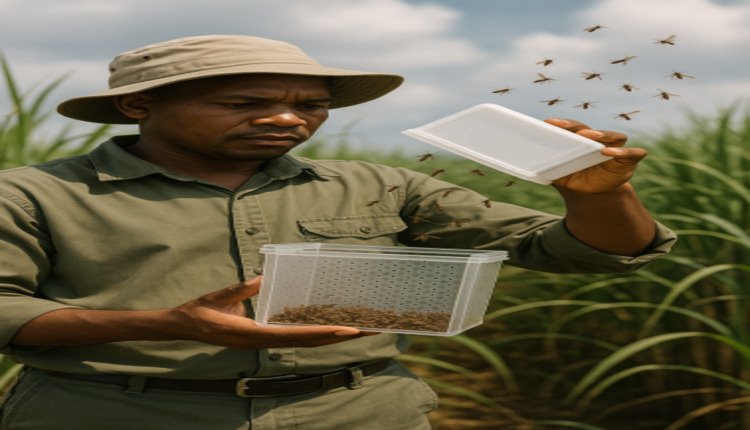Advances in Sterile Insect Technique Driven by Sugarcane Pest Management in South Africa
Discover how South Africa uses the Sterile Insect Technique to sustainably control sugarcane pests like Eldana saccharina and boost crop yields.

Sterile Insect Technique (SIT) is being advocated as a possible way to manage pest infestations with little application of chemical pesticides in sustainable agriculture. The application of SIT by South Africa against Eldana saccharina, the African sugarcane stalk borer, is a first-rate example of the success of the strategy.
Understanding the Threat: Eldana saccharina
Eldana saccharina is a sub-Saharan African moth that is widely recognized for its detrimental impacts on sugarcane production. The larvae bore into the stalks of the plant and eat the interior material, resulting in massive yield loss. In South Africa alone, the pest amounts to over $60 million in lost revenues annually in the sugarcane crop. Classical control methods such as resistant cultivars and chemical insecticides have proved to produce little difference, necessitating alternative methods.
Farmer's Weekly
The Sterile Insect Technique: A Green Solution
SIT involves large-scale rearing of the pest species in question, sterilizing them—commonly through exposure to ionizing radiation—and releasing them into the environment. The sterile insects mate with wild ones and no offspring are produced, resulting in a gradual decline in the pest population. It is a species-specific and eco-friendly approach that reduces the application of chemical pesticides and sustains beneficial insect populations.
South African Implementation of SIT for Eldana saccharina
South Africa's Sugarcane Research Institute (SASRI) has been a leader in the implementation of SIT against Eldana saccharina. Their strategy consists of several important elements:
Mass Rearing and Dietary Optimization: Optimizing a good artificial diet is crucial in mass rearing of healthy insects. Attempts have been made towards the development of diets that meet the nutritional needs of E. saccharina while maintaining high survival and reproductive potential.
Sterilization Process: Using gamma radiation, male moths are sterilized but not impaired in their competitive ability to win mates under natural conditions. It is ensured that the released sterile males sufficiently suppress the fertility of the wild population.
Field Trials and Monitoring: Pilot programs have been initiated in some regions to establish the efficacy of SIT in field situations. The trials involve the release of sterile males and monitoring changes in pest populations and crop damage over periods of time.
Challenges and Considerations
Although SIT has numerous advantages, its use is not without difficulty:
Cost and Infrastructure: Mass-rearing and sterilization facility development is highly costly. The procurement of funds and infrastructure establishment are the most important steps.
Species-Specific Application: SIT is very species-specific. Identification and knowledge of the pest biology are essential to cause any adverse effects.
Integration with Other Methods: To be effectively implemented, SIT needs to be integrated with the overall pest management strategy, including cultural practices, biological control, and habitat management.
The Future of SIT in Pest Management
Success in managing Eldana saccharina in South Africa with the help of SIT reveals its potential to be a green pest management strategy. With research becoming continuous and technology evolving, SIT may be adapted for other pest organisms and agro-environments. Research scientists, farmers, and policy-makers need to collaborate to expand the application of SIT as well as improve food security worldwide.
Conclusion
South Africa's first use of the Sterile Insect Technique to win the battle with Eldana saccharina demonstrates a commitment to environmentally friendly agriculture and pest management. By reducing the application of chemical pesticides and prioritizing sustainable methods, SIT offers a worthy course for the future in terms of the battle against crop pests.













